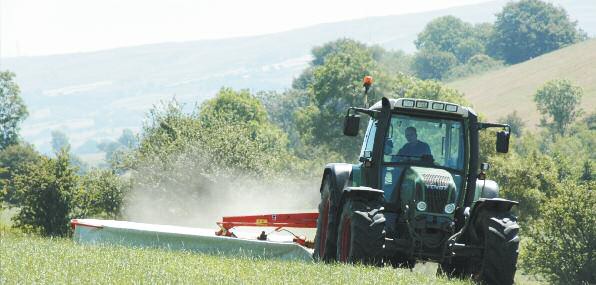Long term
- Perennial ryegrass dominant swards are critical to maximise yield and quality of your silage.
- Avoid soil compaction which can reduce yields, ryegrass persistence and trafficability on land.
- Complete soil analysis on a regular basis and ensure appropriate soil P and K status, and pH. Deficiencies of soil P, K and/or pH are the main cause of sub-standard silage quality on many farms.
Medium term
- Graze tightly in the autumn or early spring (before late March) to minimise the amount of low quality dead and stem material in the sward. Teagasc figures show a substantial dead butt can drop digestibility by 5-6 % units in May.
- Avoid excess input of Nitrogen. High or late application of N can reduce grass sugar concentration and increase buffering capacity, making it more difficult to preserve the silage. Similarly, late application of slurry that results in the grass being contaminated at harvest will also make it more difficult to preserve the silage.
- Control weeds such as docks as they will be lower in digestibility than perennial ryegrass.
Short term
Monitor the development of your crop and see if heading date, the absence of lodging and the absence of the accumulation of dead herbage, etc., are progressing as expected. If a silage digestibility of 75% is required then aim to harvest intermediate heading-date ryegrasses as seed-heads start to emerge from the grass plants. The digestibility of such crops can be expected to decrease by 2 to 3 % units per week once heading-out commences. Some flexibility in harvest date is usually necessary.
Preservation
- Avoid mowing and harvesting under very wet conditions.
- Successful wilting will greatly assist preservation and reduce effluent output. It requires at least a half day and not more than 1½ days of good drying conditions. The best wilting occurs where the grass is mown after the dew has evaporated and is then placed in wide rows or is tedded.
- Fill the silo quickly, rolling the herbage throughout, and immediately seal it perfectly. This will help achieve the air-free conditions that are necessary for good preservation and to prevent mould growth. Thus:
- Seal immediately and properly beneath two sheets of black polythene
- Cover completely with a layer of car tyres, etc., placed edge-to-edge
- Seal the edges with a layer of sandbags, silt, etc.
- As the silage sinks somewhat in the silo during the following week or two, adjust the plastic seal to ensure no ingress of air occurs
- Inspect the plastic cover frequently and immediately repair any visible damage


